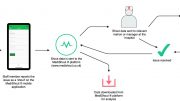The pressures of a pandemic
The epidemic of loneliness was worrying health professionals long before coronavirus arrived. UK mental health services were already straining to allocate resources to support the growing number of people with mental health problems. Given the upsurge of service demand because of the psychological sequela of COVID-19, though, those pressures will surely be magnified.
The pandemic has meant we exist in a space filled with tension; we’re desperate to connect but prevented from doing so. Furthermore, masks make it difficult to read faces. This is a worry real worry. Numerous studies have found loneliness is associated with a range of health problems – from addiction and depression to heart disease – and shorter life expectancy. In fact, loneliness, living alone and poor social connections are said to be as bad for your health as smoking 15 cigarettes a day.
Whilst they have been exacerbated by the pandemic, the challenges of dealing with a growing epidemic are nothing new. However, there are several technology-led steps that can be taken to bring the epidemic of loneliness under control.
Create a better picture of the need
Estimates often wildly vary regarding the number of people across the UK experiencing loneliness. This disparity is concerning. After all, if we can’t measure and record loneliness correctly, what hope do we have of dealing with it? Finding a better way to capture the data is surely the only starting point of any meaningful action. Only when we get the data right can we join up thinking around health and social care to deliver the most suitable interventions.
The University of California recommends three questions, with three clear answer choices for each of the questions (hardly or never, some of the time, often):
- How often do you feel that you lack companionship?
- How often do you feel left out?
- How often do you feel isolated from others?
This method provides some form of measurement. As well as enabling organisations to identify bands of the most isolated or lonely individuals, it also enables the effectiveness of any intervention to be measured.
Bring people together at scale
Much in the same way a virus is a threat to clinical health, loneliness is a threat to mental health. And just as we would shape care according to the clinical health need, we must tailor care to the mental health need. The big difference is that one of the simplest answers to loneliness and social isolation is connection with other individuals – meaning there’s the opportunity to address the needs of multiple individuals at one time.
Over 750,000 people offered their time to support at-risk groups and those in need of care across the UK during the pandemic. If we can network and connect available volunteers via technology, tasks can be communicated to the right people with the right skills in a very short space of time. Add in connections into community groups and third sector organisations and we have a large network of people who can be mobilised to deploy an anti-loneliness care plan to isolated people at risk – or simply take a neighbour to their local library.
The contact centre model must be reimagined
Traditional local authority and mental health provider contact centres used to running on an ‘inbound’ contact model, must now change to a proactive ‘outbound’ model instead, They should be making video calls to citizens, verifying current situations, and using the proactive support bubble and close integration with primary care in any exception event. Early intervention using a proactive contact model will provide high levels of cost avoidance and better patient outcomes.
Connect through effective technology
The over 75 age group is the fastest growing population now accessing the internet. There is a misplaced assumption that because they are old they’ve got no digital skills. However, this is rarely the case. Older people may be lonely, but they are not stupid; they can still learn new skills.
I appreciate there’s a bigger challenge with individuals who have some form of cognitive impairment. But that is a barrier that can be overcome. We’ve already seen the use of voice commands via Amazon’s Alexa make strides, while smart devices have been rolled out in large quantities to reduce social isolation.
Care needs to come before intervention
Of course, it’s incredibly important during this pandemic for people in the highest risk groups to remain cautious about meeting others. Loneliness can still be tackled, but from a safe distance, which is where technology clearly has a role to play.
As well as part of the solution, technology is also part of the problem though. If you go back in time, there were all sorts of social gatherings that would get people out of their homes and engage with other people. However, these have all but disappeared in recent times. The technology advances that have make life apparently more connected have displaced established communities and created circumstances that make it harder to form social bonds. Faced with a damaging epidemic, we need to find ways to replace these interactions and bring people back together, even if that means doing so virtually.
If we can take the right actions and utilise the skills of people in the right way, the hope is that we can get people who have been removed from the loneliness epidemic to go on to help other people in similar situations. That’s the success story we should look for.
Above all else, we need to start caring about our population before they need intervention. We need to take a preventative approach. There’s no single organisation that can fix any of these issues. People need to work together to solve the challenges… and we need to do it quickly.
Article by Steve Morgan, Partnership Director, Agilisys.





